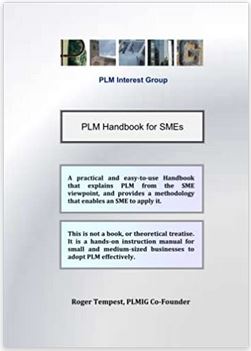|
PLM Interest Group |
|||||||||||||||||||||||||||||||||||||
|
|
|
|
|||||||||||||||||||||||||||||||||||
|
|
|
|||||||||||||||||||||||||||||||||||
|
|
|
|
|||||||||||||||||||||||||||||||||||
|
PLM Handbook for SMEs
The Power of SMEs
Whether you think of them as SMBs (in the USA), SMEs (UK), PMIs or PMEs (Italy or France), small to medium-sized businesses are a massive part of the world economy. The US Census Bureau reported that, as far back as 2007, over 1 million companies (19% of the total) that ran a payroll had between 20 and 100 employees, and made a contribution of over $5 trillion to the North American economy. Small and medium-sized businesses generate at least 25%-30% of private sector output in most industrial countries. In Italy, almost 95% of industrial companies have less than 150 employees... ...and yet there has been no easy way for this massive industrial base to get into PLM effectively. Integrated Economy
This is a problem for major corporations too. Small companies trade with large companies, as part of the larger companies' supply infrastructure, and large companies often try to broaden their supply base for technical or commercial reasons. It is very frustrating for them to find that a new supplier does not have the foundation or internal infrastructure that they need, and helpful to no-one if an SME rejects their way of working as too onerous. The Classic Mistake
Until now, the response of the PLM industry to the SME sector has been to try to sell 'PLM Lite' - a kind of "stripped down" version of what large companies implement, as if it is simply a matter of buying cheaper software and making it work. This is a mistaken idea. Many SMEs are striving to make the same kind of improvements in performance and delivery that large companies are aiming for. Their problem is that a conventional PLM approach just does not match the world they inhabit. Applying an SME-oriented PLM methodology enables small and medium-sized businesses to become more effective in all areas of product development, and to offer the kind of knowledgeable engagement that large Customer companies need. It also positions the SME to take on board many of the most advanced developments of the new technical and digital age. Product Lifecycle Management (PLM) is a very difficult subject for SMEs to address effectively. It looks very expensive, it seems very technical, and it requires an investment of time and energy that draws people away from "real work". And yet you are told that somehow it is really important, enabling you to produce products or deliver services effectively. If you don't have it, you will waste money and lose out to your more advanced competitors. It would be nice to be able to go to a vendor and buy just the right amount of PLM that your company needs - as you might walk into several shops in the high street and buy the best item that you are looking for. PLM is not like that. The advice you get when you are looking to buy is proprietary (suits their offerings); and generic (is aimed at "businesses in general"). But every company is unique in PLM terms, and yours is no exception. You have to adopt PLM in the way that is best for you. To do that, you must be able to handle the subject for yourself.
The Handbook explains PLM from an SME viewpoint, enabling any small or medium-sized business to connect effectively with the external world of PLM and become a part of it. It is also useful for SMEs that have started on PLM, and want to cross-check to see if they are going in the right direction. Handbook Structure
The Handbook is set out in 5 easy-to-read Sections:-
PLM is not a theoretical subject dreamed up by management consultants. It offers real benefits to any company that implements it. Despite the costs and the problems in understanding PLM, there are powerful motivations for SMEs to adopt it. The Handbook provides the answer to: "How?". How Do I Get One?
The PLM Handbook for SMEs is provided with Q&A support to PLMIG Members, so you will receive a copy if you join with any class of Membership. Alternatively, you may buy hard copies from Amazon. For more information about PLM for SMEs, or the Handbook itself, contact smeplm@plmig.com. © Copyright 2025 PLM Interest Group |
||||||||||||||||||||||||||||||||||||
| <<< Return Home | |||||||||||||||||||||||||||||||||||||
|
|
|
|
|||||||||||||||||||||||||||||||||||
|
|
|||||||||||||||||||||||||||||||||||||





